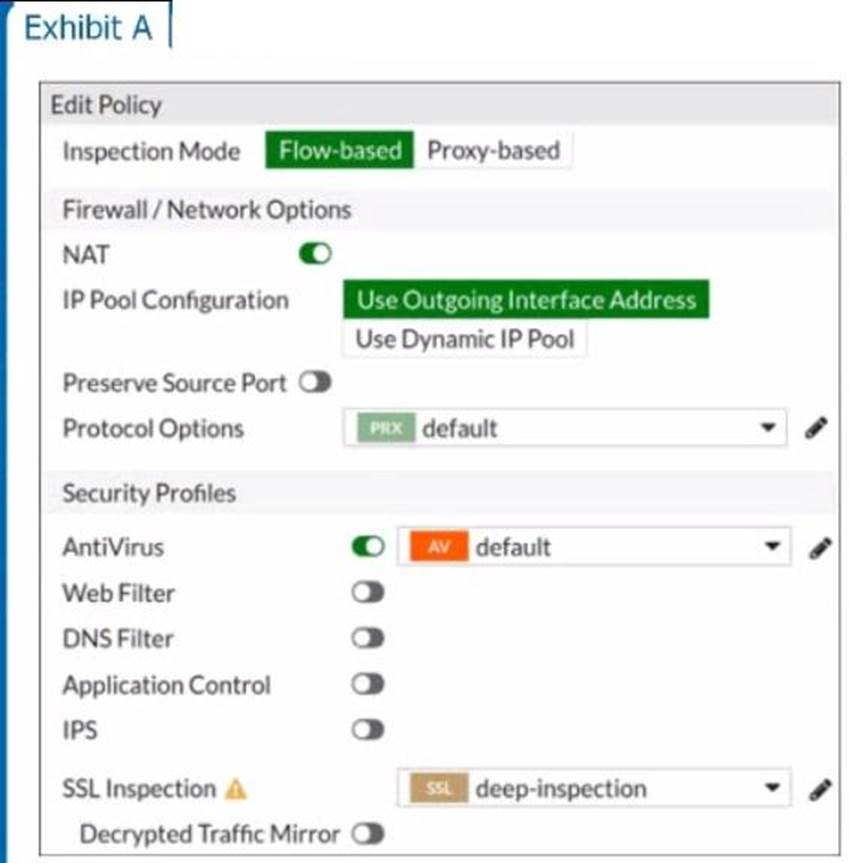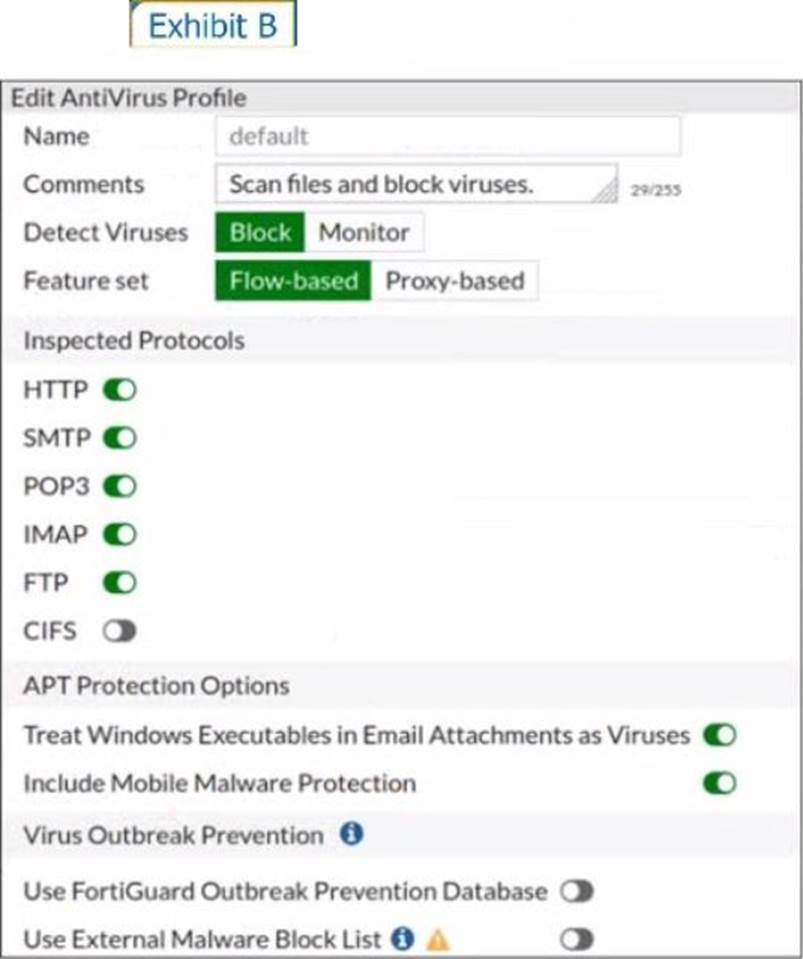Which statement is correct if a user is unable to receive a block replacement message when downloading an infected file for the first time?
Refer to the exhibits to view the firewall policy (Exhibit A) and the antivirus profile (Exhibit B).


Which statement is correct if a user is unable to receive a block replacement message when downloading an infected file for the first time?
A . The firewall policy performs the full content inspection on the file.
B. The flow-based inspection is used, which resets the last packet to the user.
C. The volume of traffic being inspected is too high for this model of FortiGate.
D. The intrusion prevention security profile needs to be enabled when using flow-based inspection mode.
Answer: B
Explanation:
・ "ONLY" If the virus is detected at the "START" of the connection, the IPS engine sends the block replacement message immediately
・ When a virus is detected on a TCP session (FIRST TIME), but where "SOME PACKETS" have been already forwarded to the receiver, FortiGate "resets the connection" and does not send the last piece of the file. Although the receiver got most of the file content, the file has been truncated and therefore, can’t be opened. The IPS engine also caches the URL of the infected file, so that if a "SECOND ATTEMPT" to transmit the file is made, the IPS engine will then send a block replacement message to the client instead of scanning the file again.
In flow mode, the FortiGate drops the last packet killing the file. But because of that the block replacement message cannot be displayed. If the file is attempted to download again the block message will be shown.
Latest NSE4_FGT-7.2 Dumps Valid Version with 154 Q&As
Latest And Valid Q&A | Instant Download | Once Fail, Full Refund

